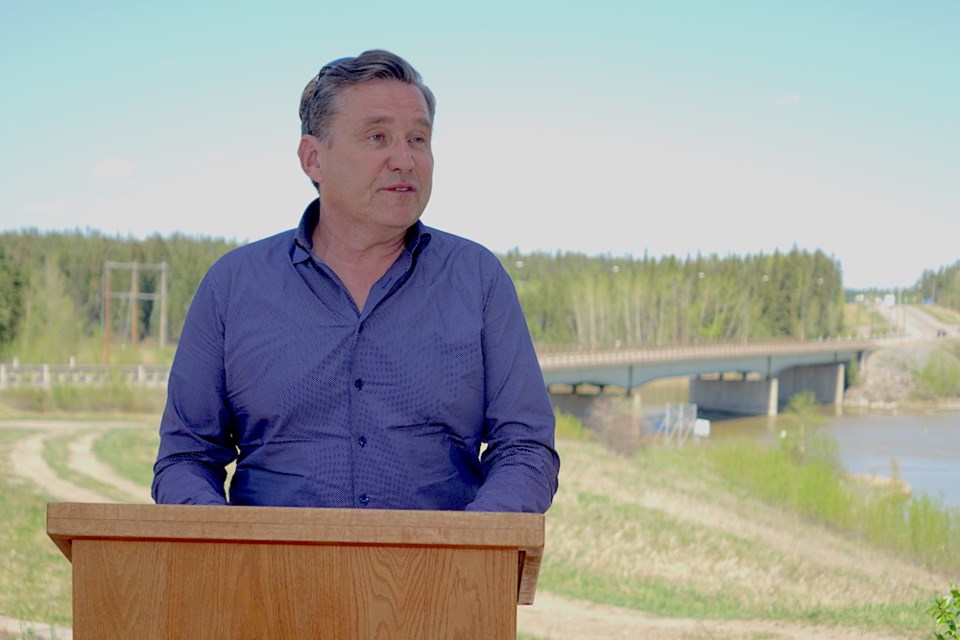Manitoba Transportation and Infrastructure Minister Doyle Piwniuk was in Thompson June 10 to highlight some of the investments his government is making in northern transportation, particularly the rehabilitation of the Miles Hart Bridge over the Burntwood River on Thompson’s north side.
The only bridge linking Provincial Road 391 and PR 280 to the provincial highway network south of the Burntwood River, the Miles Hart Bridge is over 50 years old and talk of replacing it dates back to 2014, when Mayor Colleen Smook, who is seeking re-election in October, was starting her first term as a councillor.
“It’s been a while coming,” the mayor said, recalling that the city was informed five years ago that the bridge would be redone.
Construction is due to begin by August, said Piwniuk, who noted that the bridge is a vital transportation link for the Alamos Gold mine in Lynn Lake, which has plans to begin producing 145,000 ounces of gold next year with a projected mine life of 12 years.
“We want to make sure that this bridge is going to last a long time,” the minister said.
Once completed, the bridge will include Indigenous artwork and messages in Indigenous language in recognition of Northern Manitoba’s population as a whole and the residents of communities like Nelson House, Split Lake, Lynn Lake and Leaf Rapids that the bridge provides access to being mostly of Indigenous descent.
The bridge is a vital link for many northern communities to travel into the region’s largest city, as the Thompson airport is north of the bridge.
“It is essential to see investments that maintain and rehabilitate critical infrastructure in Northern Manitoba,” said Garrison Settee, grand chief of Manitoba Keewatinowi Okimakanak, which represents 20 northern First Nations. “MKO citizens travel to Thompson regularly to access health-care services. Everyone deserves access to safe highway infrastructure. I encourage the province of Manitoba to continue investing in our region.”
Because it is the only bridge across the river, it must remain open while rehabilitation proceeds, so it will be one-way traffic during construction, said Smook, with temporary traffic controls on either side to indicate whether it is time for north-going or south-going traffic to move across. That system will cause delays for people who have to cross the bridge, something that Smook, who lives and owns a business on the north side of the river, will come to know all too well.
“I come over there 25 times a day some days,” she said.
The bridge will be closed to pedestrian and bicycle traffic while construction occurs, though there are plans to have a shuttle to take people who aren’t in cars across.
“I’m sure there’ll be some challenges for us,” said Smook.
The rehabilitated bridge, which is expected to be substantially completed by 2024, will have a wider path for foot traffic and safety features that the current one doesn’t.
“There will be fencing for sober second thought,” among those who are struggling with suicidal thoughts and thinking about jumping off the bridge, said Smook.
Piwniuk, who drove up Highway 6 to Thompson for the first time last week, said the government is spending $9 million to improve a 16-kilometre stretch of it this year and $51 million on the highway over the next three years. The transport minister, who spoke with the Safer Highway 6 citizens’ action group in Winnipeg in May, met with many of them on June 9 and says he understands some of their concerns better now, having been on the road himself.
“I noticed when we got closer to Thompson, there was probably more curves and … heavier traffic,” he said. “We may consider looking at, in the future, having some passing lanes. It really helps with the traffic, especially when people want to get around semi-trucks.”




